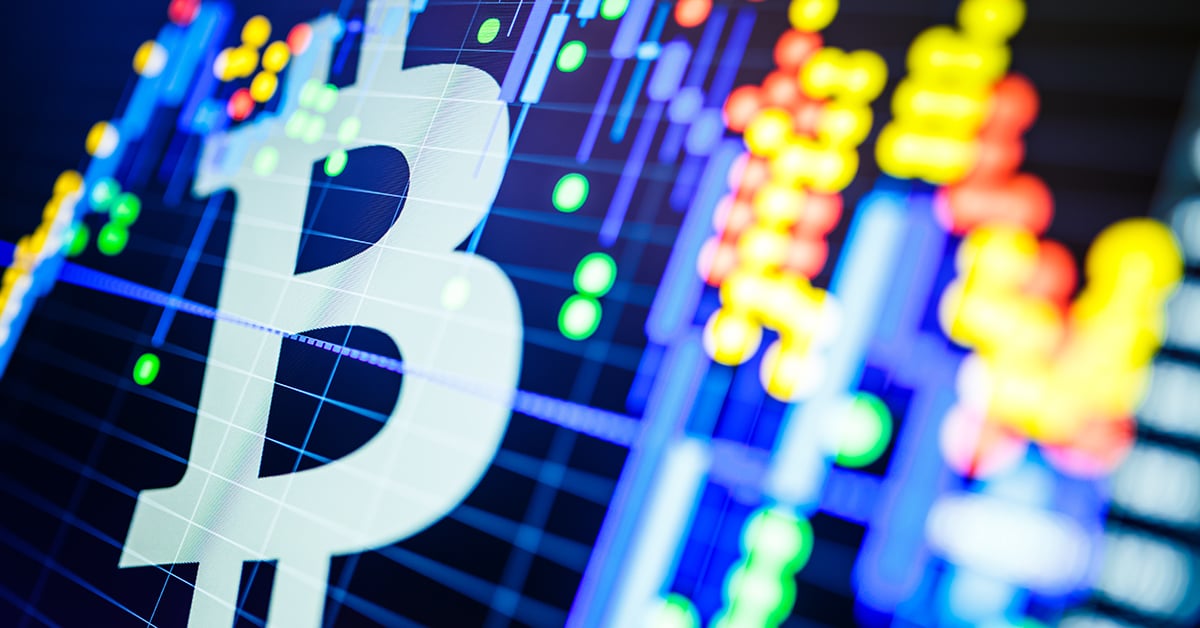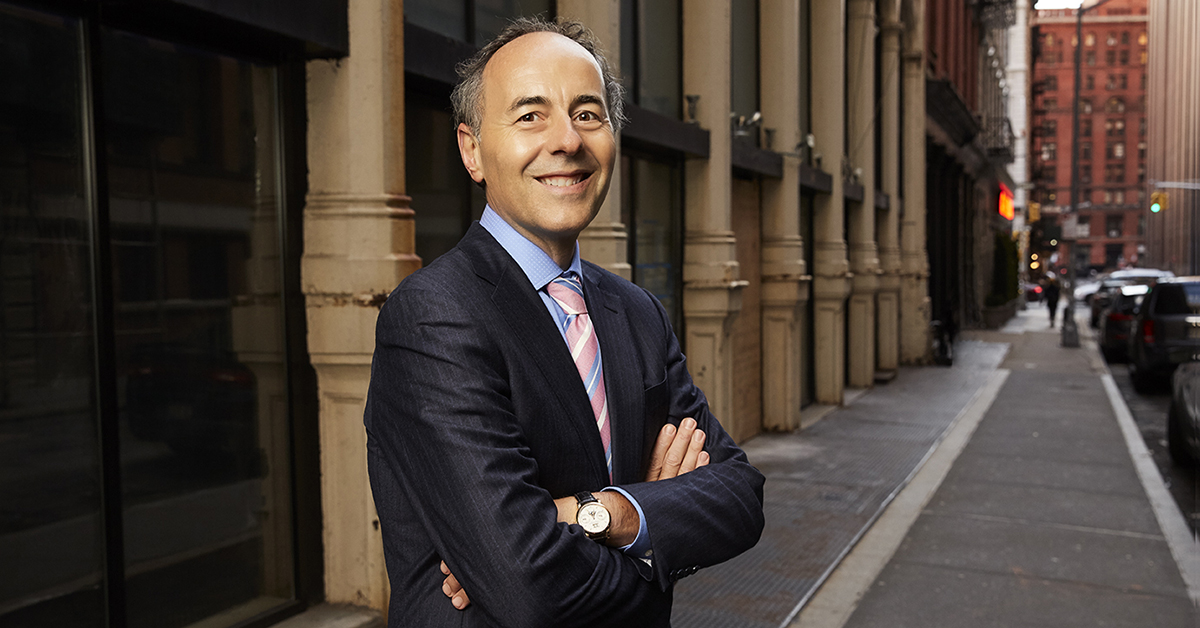Where to Invest Now: Emerging Markets and Bitcoin?
15 August 2023
Read Time 6 MIN
Share with a Friend
All fields required where indicated (*)Here are the two areas that we believe present the most compelling investment opportunity in the current environment: rising emerging markets stars and Bitcoin.
As we ushered in 2023, our outlook was shaped by the constriction of monetary supply, tight government spending and weaker corporate profits. Do recent events change our high-level view? Not really. So far, it has paid to be invested and we continue to believe inflation will keep rates higher for longer than the market expects. Our macroeconomic outlook remains steadfast. Yet, amid these broader market dynamics, two areas stand out: rising emerging markets stars and Bitcoin.
“New” EM Countries on the Rise: India, Brazil, and Saudi Arabia
Demographics, technology and the rising middle class have transformed emerging markets (EM), where 87% of the world’s population live.1 77% of the world’s “Gen Z” contingent resides in emerging markets as well. Emerging markets are estimated to be responsible for ~60% of the world’s GDP by 2026,2 yet their equity markets only represent 13% of the market capitalization of all international equities.3 This mismatch creates a once-in-a-lifetime, long-term opportunity for global investors – as emerging markets grow, evolve and transform, the size of their capital markets will become more prominent over time as well.
While China remains a dominant market and has been a major global growth driver, its post-COVID rebound has stalled. Looking beyond China, we explore below the three rising emerging market countries where we see particularly compelling investment opportunities. India, Brazil and Saudi Arabia are leaders in their respective regions, all benefitting from economic reforms and digitization initiatives.
These Three Regional Leaders Will Pass the EU in 10 Years
Share of Global GDP (PPP basis, %)
Source: VanEck Research; IMF; Bloomberg LP, as of July 2023.
India’s Digital Gold Rush Fuels Economic Rise
India's digitization journey is revolutionizing multiple sectors, and economic reforms and demographic trends provide further tailwinds to its growth. India’s 800 million smartphone users and rapidly growing population presents growth opportunities across the digital sector, including e-commerce, digital payments and online entertainment.
India’s Smartphone Penetration Fuels Digital Revolution
Source: TRAI, CLSA, World Economic Forums “Future of Consumption in Fast-Growth Consumer Markets: India” as of June 2023.
India’s government has also launched initiatives to promote financial inclusion and fintech. The rapidly spreading adoption of digital financial services is helping to create an environment more conducive to investment. In addition, the country’s demographic “dividend” may provide it a competitive edge in the global landscape. Its workforce is relatively young, large and English-proficient—particularly compared to China—and combined with a growing consumer base, we believe India is an attractive market for both businesses and investors. Despite that, investments in emerging market countries are still subject to specific risks and securities are generally less liquid and less efficient and securities markets may be less well regulated.
India’s Equity Market Outperforms China
Source: Morningstar as of 30/6/23. Past performance is no guarantee of future results.
The equity market in India is also thriving, significantly outperforming China over the last three years, and its corporate earnings growth outpaces China. We believe this reflects strong economic fundamentals and positive investor outlook towards India’s economic prospects. A look at valuations also reinforce why we believe India presents a compelling opportunity now. After a period of overvaluation during the COVID-19 pandemic, valuations are back within a more normal range.
Valuations in India Back to Normal
Source: Bloomberg as of 30/6/2023.
Brazil’s Booming Investment Potential
The Central Bank of Brazil has embarked on an ambitious journey to modernize its financial landscape. These financial reforms are creating a friendlier environment for both domestic and foreign investors, which in turn is pushing the economic engine of the country forward.
In addition, the Brazilian Central Bank is fiercely independent, and sticks to orthodox policies. By employing an inflation-targeting regime and not hesitating to raise the policy rate to combat price pressures the bank is maintaining a lower and stable inflation rate. This offers a sense of reliability and creates a credible policy backdrop—essential factors for investors. By striving to keep inflation within the target range, Brazil is ensuring the preservation of purchasing power, thereby safeguarding the value of investments.
Brazil’s challenge is to make sure that a new fiscal framework stabilizes and reduces the public debt-to-GDP ratio over time. Finance minister Haddad’s economic measures to reduce the primary fiscal deficit for 2023 in half from the expected $46 billion or 2.1% of GDP to $20 billion or 1% of GDP appears to be a net positive for the stock market.4 If successful, these factors could create a positive tailwind for Brazil equities and strengthen the fundamental support for BRL that could add to the real rates of return for international investors. However, as an emerging market currency, BRL could suffer from a high degree of fluctuation. Investors should also be wary of the way the exchange rates could influence their investments in securities issued by foreign entities.
We are particularly excited about the prospects of structural growth opportunities for companies that appear to benefit from improving the valuation of Brazilian equities.
Saudi Arabia's Economic and Social Progress
Saudi Arabia is at the epicenter of transformative economic and social changes. From empowering women to diversifying its economy and enhancing capital discipline, this Middle Eastern powerhouse is making headway. A potential peace pact with Iran further underscores the country's commitment to stability. As a result, Saudi Arabia is beckoning global investors to capitalize on its reforms and to partake in the country's growth story.
Saudi Arabia's liberalization of women's rights could not only impact the social fabric of the nation but also its economic vitality. Women have become increasingly involved in the workforce and entrepreneurial ventures, contributing significantly to the nation's GDP and enhancing the diversity and competitiveness of the business landscape. This socio-economic transformation opens doors for potential investors looking for emerging markets primed for accelerated growth.
Saudi Arabia: Women in the Workforce – Female Participation Ratio
Source: World Bank as of 30/12/2022.
The Saudi Vision 2030 marks a pivotal point in the country's economic history. At its core, the strategic roadmap aims to shift the Saudi economy away from its dependence on oil. Instead, it encourages investment in diverse sectors such as technology, tourism, entertainment, and renewable energy. For investors, this indicates an array of opportunities in rapidly expanding and innovative sectors.
Saudi Arabia's renewable energy sector, in particular, is a notable area of growth, as the country aims to become a global powerhouse in this field. This aligns with the global transition towards sustainable energy sources and provides investors with long-term, socially responsible investment opportunities.
Saudi Arabia's increasing reliance on capital markets has introduced a new dynamism into its economic environment. The country has encouraged competition, enhanced capital discipline, and facilitated an environment conducive for investors. In a region often marred by geopolitical tensions, the potential Saudi-Iran peace pact is a bright spot. By reducing regional tensions and encouraging stability, the pact could significantly de-risk investment in the country. The investors, however, take into account for the relatively high historical levels of instability in the Middle East region when making their decisions.
Now Let’s Turn from Emerging Markets to an Emerging Asset: Bitcoin
In 2017, we identified Bitcoin’s potential to rival gold and were one of the first to file for a Bitcoin ETF in the U.S. We have maintained an unwavering commitment to embracing Bitcoin as an emerging asset class with a role to play in investor portfolios. Our advocacy is deeply rooted in the firm’s mission to offer forward-looking intelligently designed products—which began with our launch of the first gold stock fund in the U.S. in 1968.
Due to its scarcity value, Bitcoin can act as a competitor or companion to gold, representing a store of value and hedge against inflation. We are approaching the next Bitcoin “halving”—which is a 50% block reward cut to the Bitcoin production rate that occurs roughly every four years. This slows the rate that new Bitcoins are introduced into circulation. Historically, Bitcoin has rallied leading up to and following a halving. Bitcoin rallied in the first half of 2023, and we remain bullish for the remainder of the year. However, future regulations and directives may impact the demand for digital assets, and may also affect the ability of digital assets exchanges to operate and for other market participants to enter into digital assets transactions.
Prior Cycles Suggest Bitcoin May Rally Around Next Halving
Source: Arcana. Data as of 4/2/2023. Past performance is not indicative of future results. Not a recommendation to buy or sell any of the names mentioned herein.
IMPORTANT DISCLOSURES
1 Source: Oxford Business Group, UN Youth Development and Participation. Data as of 2020.
2 Source: IMF. Data as of April 2021.
3 Source: MSCI. Data as of June 2021.
Coin Definitions
Bitcoin (BTC) is a decentralized digital currency, without a central bank or single administrator, that can be sent from user to user on the peer-to-peer bitcoin network without the need for intermediaries.
Index Definitions
MSCI India Index is designed to measure the performance of the large and mid-cap segments of the Indian market.
IISL Nifty 50 Index measures the performance of the top 50 blue-chip companies on the National Stock Exchange, as per their market capitalization.
CSI 300 Index is comprised of the 300 largest and most liquid stocks in the Chinese A-share market.
MSCI China Index captures large and mid cap representation across China H shares, B shares, Red chips, P chips and foreign listings (e.g. ADRs).
S&P BSE Sensex Index is a free-float market-weighted stock market index of the 30 largest, most liquid and financially sound companies listed on the Bombay Stock Exchange.
Important Disclosure
This is a marketing communication. Please refer to the prospectus of the UCITS and to the KID before making any final investment decisions.
This information originates from VanEck (Europe) GmbH, which has been appointed as distributor of VanEck products in Europe by the Management Company VanEck Asset Management B.V., incorporated under Dutch law and registered with the Dutch Authority for the Financial Markets (AFM). VanEck (Europe) GmbH with registered address at Kreuznacher Str. 30, 60486 Frankfurt, Germany, is a financial services provider regulated by the Federal Financial Supervisory Authority in Germany (BaFin).
The information is intended only to provide general and preliminary information to investors and shall not be construed as investment, legal or tax advice VanEck (Europe) GmbH, VanEck Switzerland AG, VanEck Securities UK Limited and their associated and affiliated companies (together “VanEck”) assume no liability with regards to any investment, divestment or retention decision taken by the investor on the basis of this information. The views and opinions expressed are those of the author(s) but not necessarily those of VanEck. Opinions are current as of the publication date and are subject to change with market conditions. Certain statements contained herein may constitute projections, forecasts and other forward-looking statements, which do not reflect actual results. Information provided by third party sources is believed to be reliable and have not been independently verified for accuracy or completeness and cannot be guaranteed. Brokerage or transaction fees may apply.
All performance information is based on historical data and does not predict future returns. Investing is subject to risk, including the possible loss of principal.
No part of this material may be reproduced in any form, or referred to in any other publication, without express written permission of VanEck.
© VanEck (Europe) GmbH / VanEck Asset Management B.V.
Sign-up for our ETF newsletter
Related Insights
Related Insights
01 May 2024
08 December 2023




